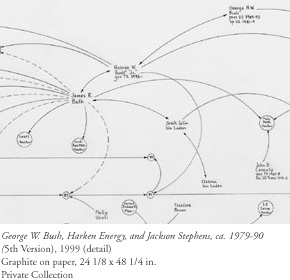A hapless British journalist was jumped and his article about the rebuilding at the WTC site was hijacked by a band of Rebuild The Towers soundbite whores during a recent visit to New York City. James Westcott published his account of the incident in the Guardian, but it appears he has no idea what happened to him.
The number of guerillas is not known. Activist groups such as Team Twin Towers and Make New York New York Again claim wide “populist” support, but most attacks can be traced back to one man, John Hakala. Hakala’s tactic of delivering seductively glib quotes that have no basis in reality is now well known to veteran reporters on the WTC beat.
Westcott’s story on unresolved issues and conflict over development efforts at the WTC site was turned into a disturbing manifesto for rebuilding the Twin Towers that betrays the faulty reasoning, impractical banality, and logical inconsistencies of the guerillas’ position. One “architectural activist” seeking “restoration” of the Towers criticizes the Freedom Tower: “We are replacing a symbol of world peace and human cooperation with a self-absorbed salute to America,” says an “architectural activist”. Yes, echos another, “They [the Towers] were us: stark capitalism, power and beauty without explanation or apology.”
And Hakala points out the fatal flaw of the Childs/Libeskind-designed Freedom Tower: “You don’t see it on a single mug, T-shirt, postcard or pin around the city.”
Observers who wonder how a seasoned journalist like Westcott could be so vulnerable suggest he let his guard down after reading a cryptic outburst of support for rebuilding by controversial Times architecture critic Herbert Muschamp. Meanwhile, guerillas may have interpreted Muschamp’s reference to “Mnemosyne” as a secret code to trigger the attack. Muschamp has since been relieved of his criticking duties.
Author: greg
A movie about ‘attacking’ museums
From the mixed up files of Mr Arthur Robins, an artist who sells his work in front of the Met:
While visiting the Met, Robins was questioned in the recent guerilla attacks on that museum and the Guggenheim, where an unknown artist surreptitiously installed works critical of George W. Bush. Later, he was visited by a phalanx of police and Terrorism Task Force officers. He videotaped the encounter, and, well, I suggest you read Julie Salomon’s account in the Times, which would make a perfect commentary track if Mr Robins ever puts out a DVD. Biiiizarre.
[Update: For an entirely different kind of video shot, surveillance-style, by an artist, one which also deals, technically, with criminal activity, read Guy Trebay’s piece on Andrea Fraser.]
On Politics and Art
Rob Storr interviewed Felix Gonzalez-Torres in 1995. Felix identified Helen Frankenthaler as the most successful political artist alive, and then told about the invitation he received in 1989 to participate in the State Department’s Art for Embassies Program:
It has this wonderful quote from George Bernard Shaw, which says, “Besides torture, art is the most persuasive weapon.” And I said I didn’t know that the State Department had given up on torture – they’re probably not giving up on torture – but they’re using both. Anyway, look at this letter, because in case you missed the point they reproduce a Franz Kline which explains very well what they want in this program.
4/06 update: Creative Time has since removed this interview, and only one other place, the Queer Cultural Center, is hosting it. To make sure it stays out there, I’m reproducing it in whole on greg.org, just because. [note: I formatted it for easier reading.]
Continue reading “On Politics and Art”Word is, Muschamp is Packing his Bags
There are published stories, and unpublished ones. I hear that Muschamp is moving to the Travel Section. Which makes sense to me. His last real architecture review has me planning a road trip to Seattle.
Check out these excellent photos of Koolhaas’s Seattle Public Library. [thanks, Hap]
WTC Site Cultural Anchor: The Drawing Center??
 Wow. There’s opaque and then there’s opaque. The Drawing Center was selected to join The Freedom Center in one of two cultural buildings planned for the WTC Site. Their building will adjoin the WTC Memorial, while the other two cultural organizations–The Joyce and Signature Theaters–will share a performance center across the street.
Wow. There’s opaque and then there’s opaque. The Drawing Center was selected to join The Freedom Center in one of two cultural buildings planned for the WTC Site. Their building will adjoin the WTC Memorial, while the other two cultural organizations–The Joyce and Signature Theaters–will share a performance center across the street.
I’m a huge fan of The Drawing Center, as much as the aggressively unassuming, rather esoteric, old-school SoHo gallery can engender huge fandom. But how in the world did the LMDC come to the decision to put them next to the sure-to-be-corporate-slick American Freedom Experience? Is there some backchannel connection?
If only the artist Mark Lombardi were still alive, he could explain it to us. Lombardi’s intricate drawings traced the webs of corruption, power, and influence that spun out of major scandals like the BCCI bank collapse, Iran-Contra, and, ahem, “George W. Bush, Harken Energy, and jackson Stephens ca 1979-90.” That’s the title of the 1999 work above, which was included in the first major retrospective of the late artist’s career–held at The Drawing Center last fall.
On an Unrealized Art Project
In 1999, I conceived and contrived to make a piece of art. It began as an idea for a commission for the artist Olafur Eliasson, but my idea was so embarassingly specific and complete, there’s no way I could bring myself to ask him to do it. Even though I cannot imagine myself as an artist, or a maker of art, I had to admit that this was not an Eliasson, it was Eliasson-esque, at best.
The piece is a sort of reverse sundial.*
Our apartment in NYC faces north, and so receives no direct sunlight. At various times in the day, the sun would reflect off of windows across the street, creating sharply angled patches of bright light, which would move across the wall or floor, marking a specific moment in the day.
I devised to place a mirror on the roof of the recluse’s townhouse across the street, which would reflect sunlight directly into our apartment. It would have a motor which would track the movement of the sun, thereby maintaining the reflecting angle throughout the day. [Constructing this motorized mirror was a great obstacle. Last year, when I finally told Olafur about this piece, he said a German company made such a mirror, called a heliostat, which was exhibited at the Hanover 2000 Expo.]
Rather than the naturally changing light of a normal day, the apartment would receive constant, consistent, direct light. The light wouldn’t shift, the shadows wouldn’t lengthen, then contract. At first, the brt lt praised by realtors and sought after by apartment hunters would be welcome, but I expected that, after a while, it would become unnerving, even maddening.
[2007 update: soon after posting this, I told this story to a couple of Olafur’s dealers, who, instead of laughing with/at me, said I really should have proposed it to Olafur, because he would have loved doing it. Which is a huge bummer, because then I could have paid 1999 Olafur prices for the piece. Oh well, it’s mine now.]
* Olafur actually made a sundial-like piece in 1997 by cutting a round hole in the roof of the Marc Foxx gallery in Los Angeles. The circle of light tracked beautifully across the empty gallery space. The piece was titled, Your Sun Machine. I never dreamed to call my piece My Sun Machine, though.

On Remembering
I started this weblog to document a documentary I was going to make, a remembrance of sorts of my grandfathers. That film has been subsumed into the souvenir series. This week, even though he was never the subject of that film, I’ve been thinking about my great-grandfather a lot, too. That’s because he died in 1982, at age 90. He had a shorter battle with Alzheimer’s than Reagan did. These men differed in other ways, too:
Reagan: Cut a deal to keep US hostages in Iran until after his election. Incubated Islamic militarism and, ultimately, Osama Bin Laden. Armed Saddam Hussein. Sent Rumsfeld to offer support while he gassed the Kurds. OK’ed the invasion of Lebanon. Cut and ran after terrorists killed US Marines. Sold heavy weaponry to Iran to fund right-wing death squads in Nicaraqua. Prevented the government from addressing the AIDS epidemic. Invaded Grenada.
Great-grandfather: Put a plow on a tractor and plowed under half a field of fullgrown corn next to his house before someone ran out to stop him.
Reagan: Conflated speeches with actions.
Great-grandfather: Never said much.
One of my earliest memories of him was a visit we made one summer when I was 4 or 5. I was already too much a city kid, or a suburban kid, really; visiting the farm was already an exotic, scary adventure.
He was wearing worn overalls and a tan shirt. We were kneeling under a giant willow tree in my grandparents’ backyard (they’d built just down the street; my grandfather had followed his father into farming.), and he was showing me the carrots growing around its base. He pulled one out and offered it to me to taste. It was small, too early to harvest then, but highly marketable as a baby carrot now, I’d imagine. It’s got dirt on it, I recoiled, you have to wash it first. He smiled and brushed some dirt off it, and started nibbling on it himself. Then he pulled out another one and offered it to me. Flush with thrilling fear, I ate an unwashed carrot straight from the ground.
Internet Losers Predict Box Office Winners
[via waxy] Box office performance prediction models are a business school professor’s best tool for drumming up consulting gigs in the entertainment industry they secretly wanted to get into in the first place. For a long time, my old Wharton professor, Jehoshua Eliashberg’s model was the state of the analytical art. Now, he’s got some competition.
According to Prof. Christopher Dellarocas and some other MIT quantjocks, including , the losers who rush home from the theater to post about the movie they just saw can accurately predict the film’s box office take.
We’re not talking about blogger-level losers, though, it has to be the down deepest dregs, the posters on Yahoo! Movies, for example, who best approximate the elusive “word of mouth” effect on a film’s performance.
So now studio suits will sic all their interns on the message boards to talk up a film during its opening weekend, right? While Dellarocas doesn’t make this false logical leap in the study itself , the NetworkWorld reporter gets him to wrongly conflate prediction and causation:
The study also highlights the potential for corporate mischief, given that these review-and-ranking sites are forums for what is essentially anonymous opining.
“Manipulation of forums will become some sort of arms race between studios,” said Dellarocas.
Except, if the population of monkeys typing about The Day After Tomorrow is now only representative of the population of Los Feliz instead of the population of Los Estados Unidos, the forum’s predictive accuracy will drop, right Professor?
Professor? That’s Jake’s trailer, professor, I don’t think you’re allowed in there…
Credit Where Credit is Due

Reagan hits his last mark, stumping for the Bush/Cheney campaign
Love him or hate him, you’ve gotta give Karl Rove credit for pulling the plug at the optimal time. He manages 1) to divert attention from whatever new Bush administration embarassments are set to unfold this week, and 2) he figures out how to get some campaign appearances out of Reagan.
Related: Joan Didion’s Reagan myth-puncturing essay, The Lion King, in the NYRB.
[Update: finally, a Nader for the right wingnuts. Bush/ZombieReagan ’04 campaign site]
Revisiting–and repeating–the past
I just found and reread this post from a couple of years ago, and I still like it very much, unfortunately.
How Conceptual Art is Like a Renaissance Tapestry
Because she’s done such a great job with her own kids
Kathy Hilton is getting a reality TV show. She’ll teach some young bumpkins what they really need to do to get head. A head. Ahead in NYC. How to please a man. Manhattan. How to please Manhattan Society.
Bob Morris’s Style section piece is so breezily damning, she’ll probably think it’s good and have it framed. Or not. After all, “Her friends say she is smarter than she appears.”
“Anyone who knows Kathy Hilton (and many society women do), knows she has always taken the job of being a parent seriously,” writes Morris, who accompanied Hilton home from Cipriani, where she attended an afternoon fur fashion show. “Back in the lobby of the Waldorf Towers, she ran smack into her son Conrad, 10, in soccer gear.
“‘Hi Conrad,’ she said. ‘How was the game?'”
Yes, she’s a profound influence on her children. And she’ll share her secrets with you–this fall on NBC!
[update: if you’re a hillbilly with more back hair than than shame, get yourself over to the audition at Tavern on the Green, “where we’ve replaced the washed up publicity whores they normally serve with Kathy Hilton!” Thanks, Gawker.]
Interpol Short Film Contest
If it’s too late for you to get the money and the inspiration for your short film from Nike–and it is–try Interpol. Matador Records will “fund” ten short films “inspired by the music and aesthetic of the band.” I put “fund” in quotes because they’re only ponying up $1,000, so no tsunamis flooding midtown.
First, write a treatment, put a storyboard together, shoot a demo or a trailer, whatever you need to explain what you want to do. Get it to Matador by July 5th.
The band will personally choose the ten treatments that “most interestingly embody the spirit of their music in the cinematic form.” The only restrictions: 1)if you use music, it can only be from the clip of the new song they provide, and 2) NO MUSIC VIDEO. Oh, and “help us out of the corner we’ve painted ourselves into” “Black is not the only color.”
Details are all at Matador’s site, where you can also watch Interpol’s music videos–remember, NO MUSIC VIDEO–by Doug Aitken and Christopher Mills. [via The Fold Drop]
Related [?]:
Moby to advise on Joy Division biopic/murder mystery movie
Ex-boy band member fined for soliciting “prostitute” from his moped
[Update: The Joy Division movie is on, but not with Moby, and not with Jude Law (?). Apparently, dueling groups had options that expired, but they announced it anyway, &c, &c. via TMN]
Upcoming Sonic Youth CD now on WPS1
WPS1.org, the online audio program of PS1, has been up for a few weeks now, and it’s getting better. Some listening tips:
Weblog about Filmmaking about Nike
It’s not just for banner ads anymore.
Nick, Choire & co. launched Art of Speed, a weblog-formatted microsite for Nike that’ll run for three weeks on Gawker.
Art of Speed runs with ideas about filmmaking and web-based marketing that got a lot of attention in the BMWFilms campaign. Through Ridley Scott’s production company, BMW commissioned established directors (John Frankenheimer, John Woo, Guy Ritchie) to create short films with independent narratives, but two recurring stars: the cars, and that guy from Croupier.
After BMW, Ford, JWT and Atom Films launched Focus in Films, a series of forgettable shorts by “independent filmmakers” starring the Ford Focus. Nike’s approach, to ask “15 talented young filmmakers” to make shorts on the idea of speed, follows Ford’s strategy. But as Gawker’s post points out, this kind of sponsor-driven programming “can be done well, or badly.” I’m hoping Gawker’s Art of Speed is the former.
So much for real-time

I went to Houston last week for the opening of an amazing show at the Menil Collection, photographs by Olafur Eliasson. Of course, my post about it is now like a 10,000-word essay, which I don’t know if even I’ll ever read.
So in the mean time, check out the show, and the Times article on the de Menil’s Philip Johnson-designed house, which was a sharp International Style stick in the eye of Tara-style 1950’s Houston.
